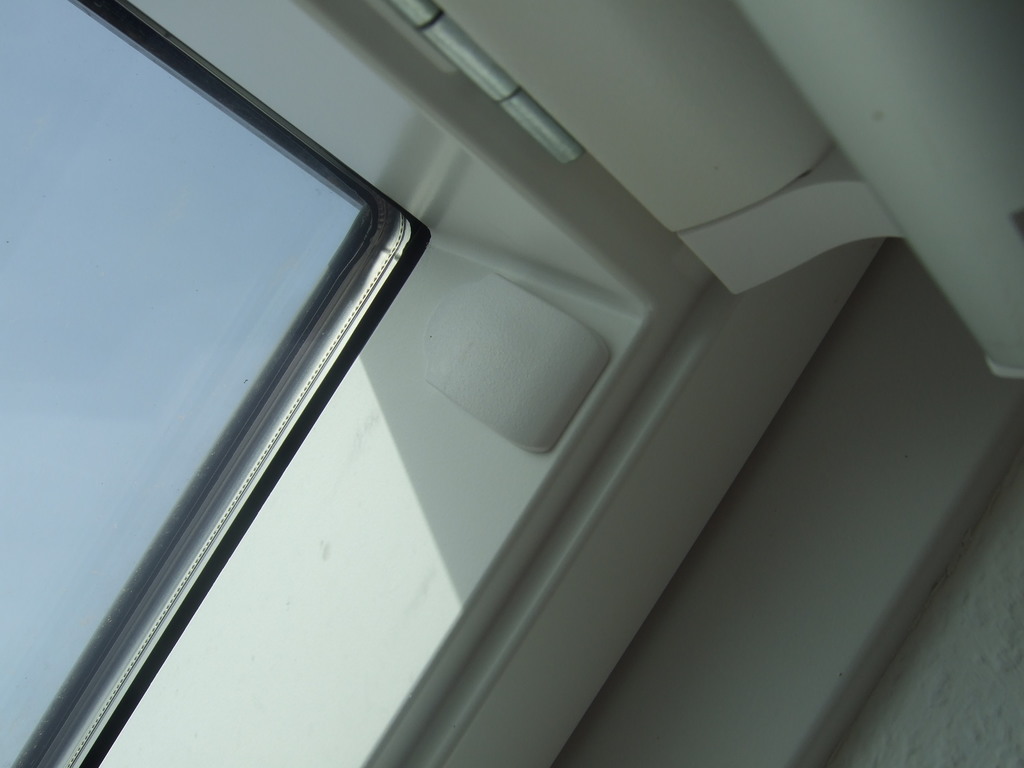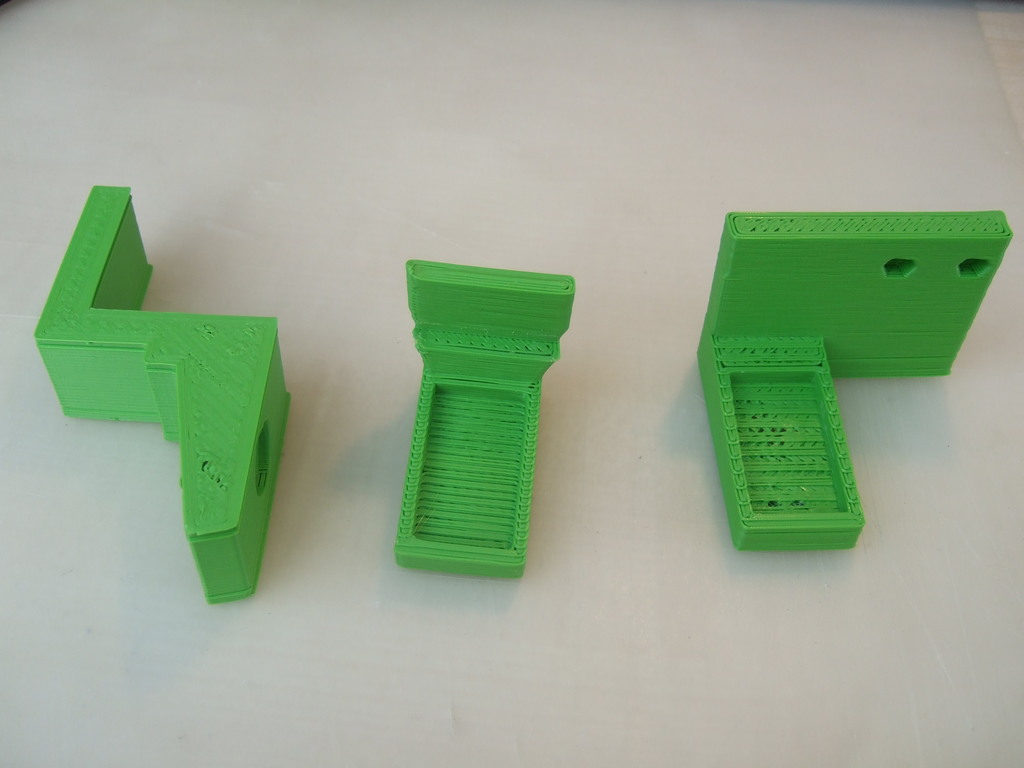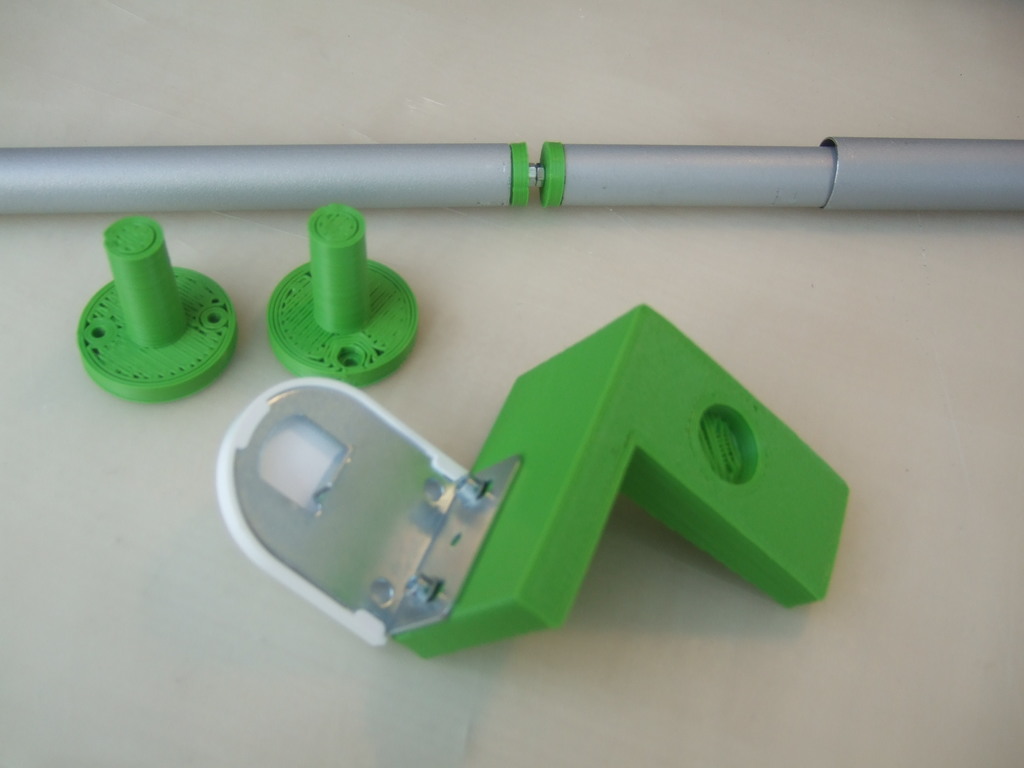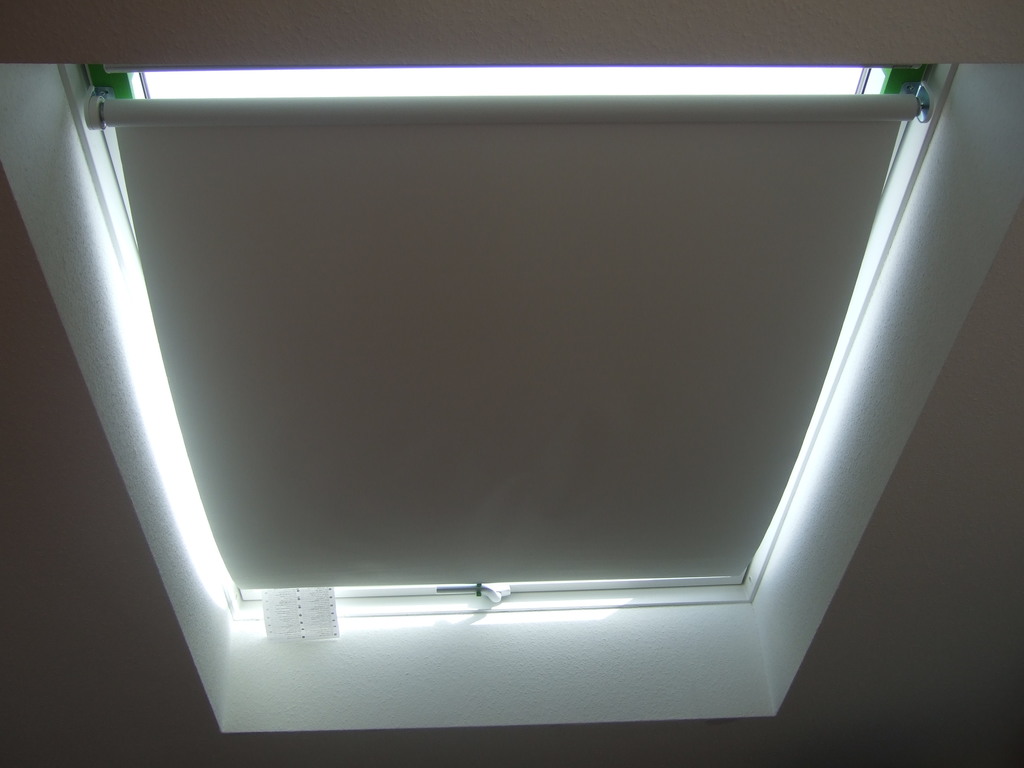In my appartment there is a converted attic with several roof windows. These have no roller blinds, so in summer it gets very hot up there. Also guest room is located there, so it is quite detrimental to the guests sleep to not be able block out the early rising sun.
Of course there exist roller blinds in the official Velux accessories store, but the price is quite hefty, so I was looking for alternatives.
There exist generic brands of roller blinds that are much cheaper, but none of them fit the proprietary mount on the Velux windows, and there seemed to be no other proper way of mounting.

But I have a 3D printer, so I took this as a challenge. I got a roller blind from IKEA (Tupplur, 80cm wide) for roughly a fifth of the price of an original Velux blind and decided to design a adapter that would allow me to mount it on my Velux window (Type GPU SK08).
The provided mount consists of two bosses on the inside of the window frame, onto which the accessories clip. However, the IKEA roller blind is a bit wider than the distance between the bosses, so I would have to put them on top of the frame and not within the frame. It required several iterations for the adapter to get right, as many angles of the window frame are rectangular.

With this arrangement, a press fit of the bosses into the pockets in my 3D printed adapters was not sufficient, so I repurposed some pipe from a leftover curtain rail (IKEA RÄCKA, I think) to build a spreader which prevents the adapters from slipping off the bosses. It consists of two lengths of curtain rail that fit into pockets on the adapters on each side, and a pair of 3D printed plugs to connect them in the middle and spread them. First I had big and beefy plugs and wanted to print spacer discs to put between them, but later I settled on much smaller plugs that are spread by two nuts and a short piece of threaded rod. This way I could slide a length of larger diameter pipe (the curtain rail is telescopic, so there are two diameters of pipe that slide nicely into each other) over the connection, which also prevents it from bending there.

Finally I 3D printed a hook that allows me to hook the blind to the handle.
The result leaves some places where light can enter, so it surely does not compare to the original provided by velux, but for an alternative that costs only a fraction, it does pretty well. (I intend to print the parts again in a less aggressive color).
